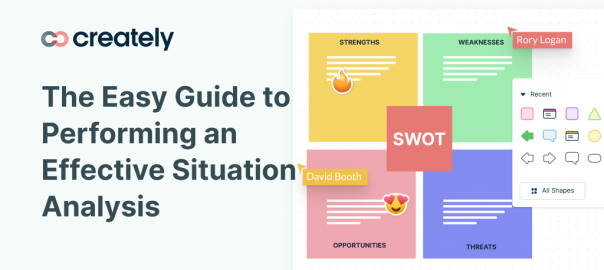Sometimes we need more than a big picture vision to guide the actions of a company. A powerful mission and lofty goals may provide direction for an organization but do little to clarify the everyday tasks needed to get you there.
An organizational strategy is a plan that helps bridge the gap between a company’s vision and actual work. It is a dynamic, long-term plan that aligns the actions of a company and specifies how your business will allocate resources (money, labor, and inventory) to support infrastructure, production, marketing, and other business activities.
An Effectively Devised Organization Strategy Would Allow a Company to:
Set Direction and Priorities
Without clear direction, a business can continue to do many tasks without achieving any meaningful change. An organizational strategy provides your business with priorities. It defines success and shows you what activities you should execute first in order to move your business toward your eventual goal.
Align Teams and Departments
One of the most difficult things to achieve in any business is getting teams and departments to work towards a common goal. Without an organizational strategy that’s nearly impossible. When you set an overarching strategy — even if it’s board, it gives employees something to get behind and creates alignment within and among departments.
Simplifies Decision Making
One of the most difficult things to achieve in any business is getting teams and departments to work towards a common goal. Without an organizational strategy, that’s nearly impossible. When you set an overarching strategy — even if it’s broad, it gives employees something to get behind and creates alignment within and among departments.
A clear organizational strategy allows you to make decisions that are in line with achieving your goals. It helps reduce choices and provides a way to assess different options more accurately.
Allows Adaptability
A focused organizational strategy allows teams to be more nimble and adapt to obstacles much better. It continually measures the distance between where you currently are and what your eventual goal is. It allows you to take corrective measures when certain aspects of your business are going off track.
Three Levels of Strategy:
An organization should base every decision it makes on its overall strategy. If the strategy is poorly chosen or formulated, it has cascading effects on the effectiveness of employees in pretty much every department within the organization. There are three levels of strategy that exist in every organization.
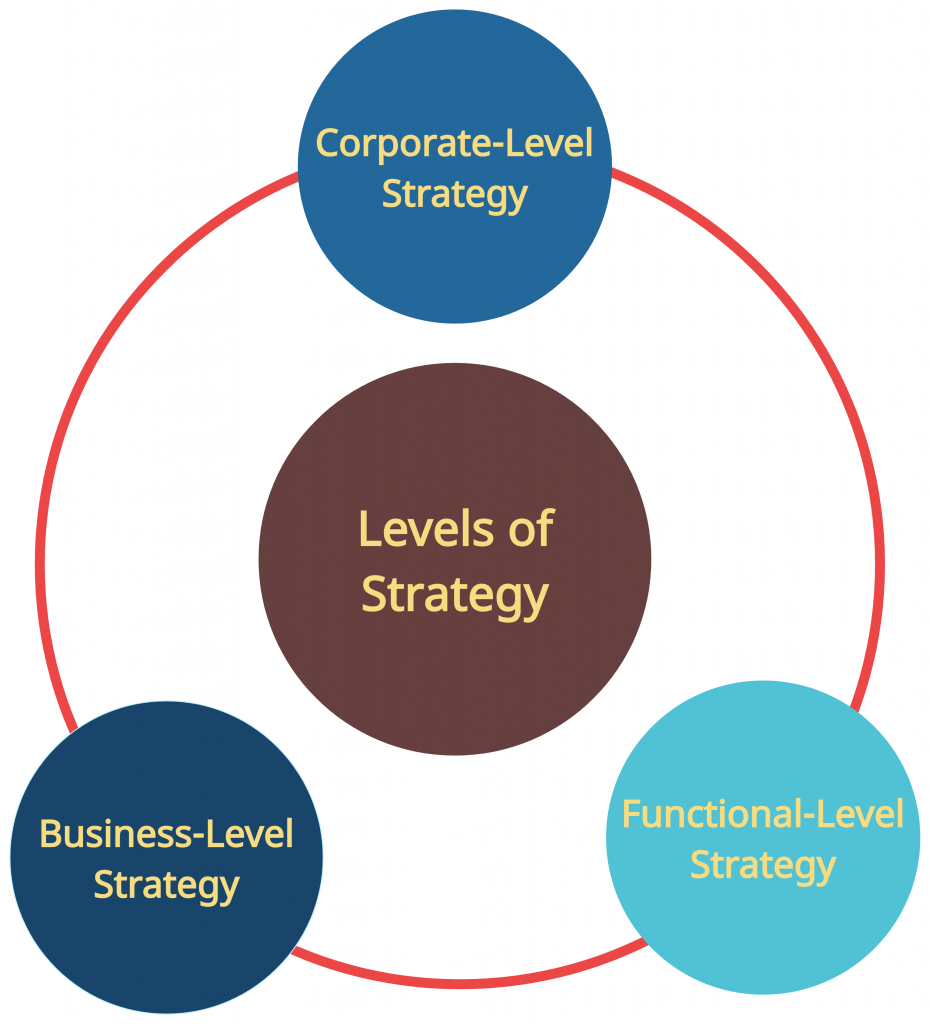
Corporate-Level Strategy
Corporate strategy deals with the big picture questions like what business an organization should be involved in, how to gain competitive advantages in an industry, and how to establish the optimal set of business practices.
Functional-Level Strategy
A functional-level strategy aims at improving the internal operations of a company. It is concerned with the efficiencies within a department and usually consists of several sub-strategies related to each department like, ‘Marketing Strategy’, ‘Human Resource Strategy’ or ‘R&D Strategy’. The goal is to align these strategies as much as possible with the greater corporate strategy.
Business-Level Strategy
Broadly speaking, a business-level strategy answers the ‘how do we’ questions of an organization. In order to answer these questions, it is important to first have a good understanding of a business and its external environment. Business-level strategy is aimed at gaining a competitive advantage by offering true value for customers to gain sustainable and inimitable competitive advantages within the competitive landscape.
The Pyramid of Clarity
The Pyramid of Clarity is a strategic thinking tool developed by Asana. It is used as a framework to connect everyday tasks to strategic objectives. Everyone in the organization can now understand how and what they are doing ladders up to the company’s vision. It helps teams stay on the same page, build confidence in strategy and execution, and help individuals make decisions that are in line with the big picture.
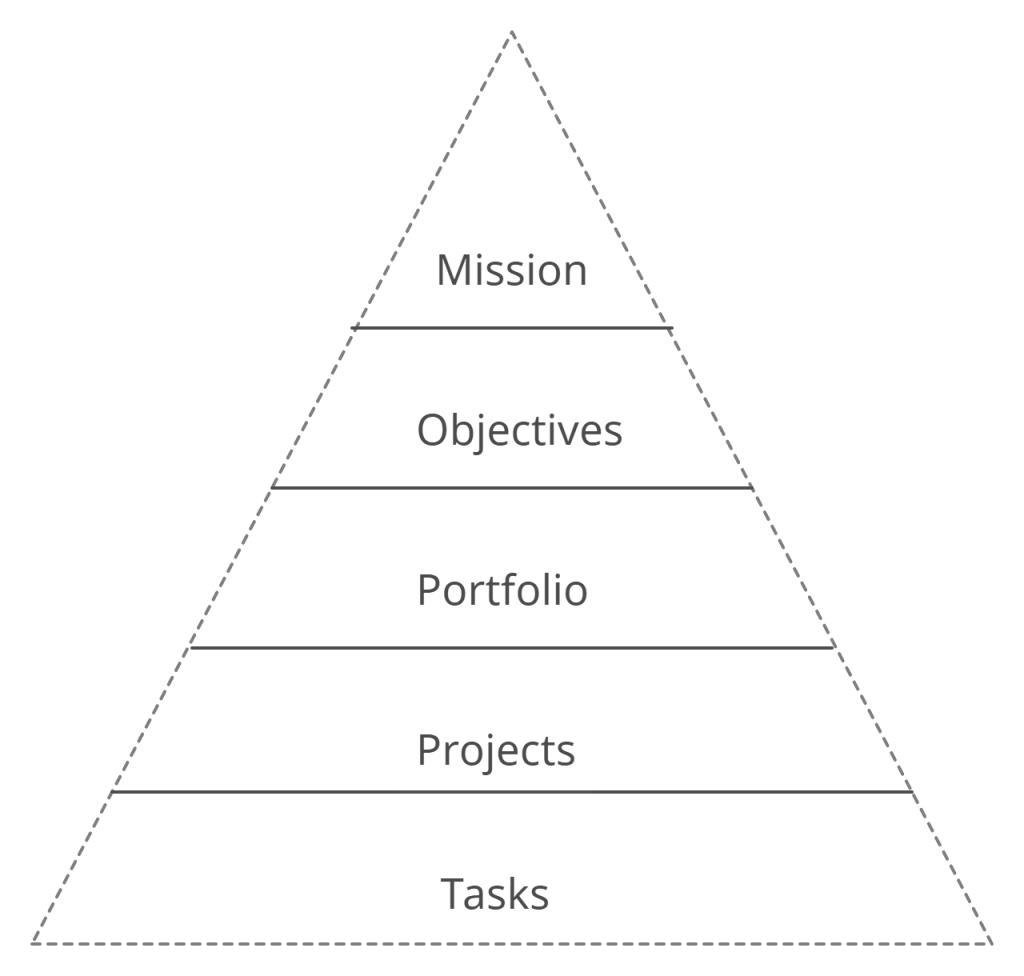
Every task is connected to a project, which is part of a portfolio, which is connected to a goal that supports the company’s vision.
The Pyramid of Clarity can serve as a guiding light that helps teams decide what to work on every single day. Team members use it to prioritize tasks that help achieve their Key Result Areas which in turn helps achieve annual objectives which ultimately help achieve a company’s mission.
Strategy Mapping
A strategy map is a visual representation of an organization’s overall objectives and how they relate to one another. It is a powerful strategic planning tool that showcases the entire strategy of an organization in one place. It illustrates the cause and effect relationship between the components of an organizational strategy.
A strategy map forces the organization to think about how the various functions interact with and support each other and therefore results in alignment around the strategy, which makes for much easier implementation and execution.
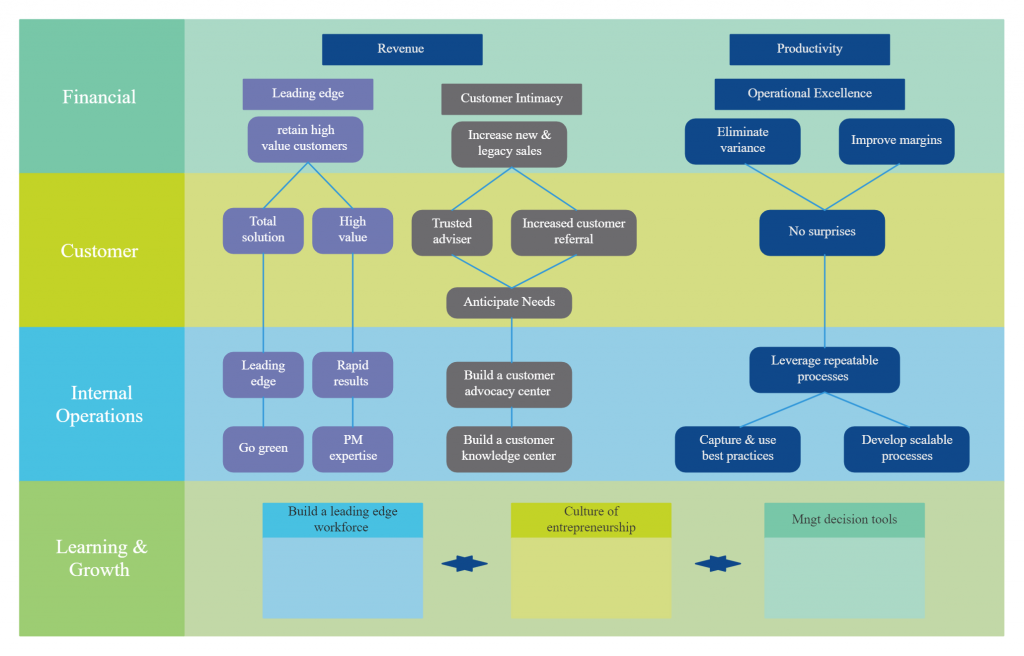
A typical strategy map organizes objectives or perspectives into four categories, including:
- Finance
- Customer
- Internal Processes
- People/Learning & Growth
The first two perspectives deal with the ‘what we are getting’ questions while the latter two are more about ‘what we are doing’. A strategy map is read from the bottom up because what you do directly affects what you get.
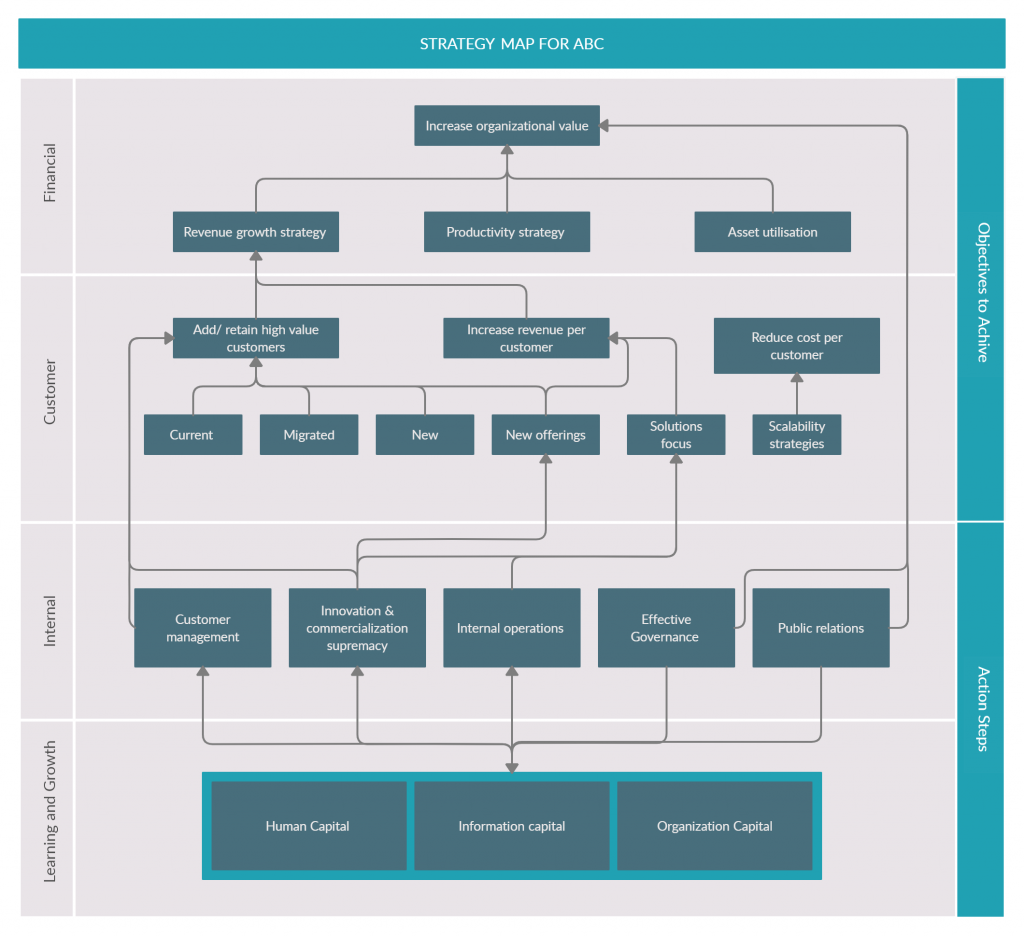
Finance
It’s standard to use two measures of financial strategy: revenue growth and productivity. It could be a broad goal of increasing shareholder value or a more specific one of acquiring a certain number of new customers. You can then work backward to build your strategy with this final focus in mind.
Customer
The customer value proposition should be at the core of your strategy. By focusing on what your customer’s needs are, you can build those values into the earlier stages of the strategy map. Companies usually focus on achieving one of these three customer value propositions.
- Product leadership
- Customer intimacy
- Operational excellence
Processes
After deciding on your value proposition you now have a clearer idea of what you need to do to get there. You can then develop a better understanding of the work that needs to be done and the number of team members you need to do it.
Learning and Growth
This is the foundation of the strategy. It includes the organization’s culture, technology, and employee knowledge and competencies needed to support the organization’s strategy.
For an in-depth guide on how to plan and execute a strategy map, check out our previous blog post here.
Tell Us About Your Experience with Organizational Strategy
A sound organizational strategy is important to have across all sizes of companies, operating in all industries. It begins with the big picture you want to achieve and then the steps you need to take. Have you had experience planning and executing an organizational strategy? Tell us some of your biggest learnings in the comments below.



